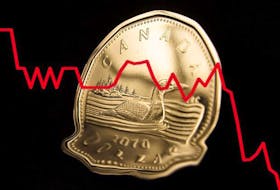What started off as a great rebound year for investors is starting to show signs of weakness, amid fears that the global economic slowdown may worsen in the face of escalating trade tensions between the U.S. and China.
That uncertainty may be weighing on equity markets, but for investors in gold it has been a whole different story.
Over the past month, while the S&P 500 has fallen four per cent, gold has surged by nearly seven per cent, with the price of bullion surpassing US$1,520 and reaching its highest level since April 2013.
So far this year, gold is up 18 per cent, outpacing the S&P 500’s 15 per cent gain.
Over the past year the results are even more stark: While the S&P 500 is up only 2 per cent, gold is up 26.5 per cent and gold producers — as represented by the IShares S&P TSX Global Gold Index (XGD:TSX) — are up a whopping 47 per cent.
For those investors wondering if they’ve missed the boat on the trade there are a couple of important factors to watch out for before wading in.
Hedge funds have boosted their net long position in gold to their highest levels since July 2016, according to the latest CFTC report. Having such an overbought speculator long position can be quite dangerous when these trades unwind. For example, in 2016, the price of gold fell nearly 20 per cent from its July highs to December as the global economy improved and central banks started tightening.
We think the same risk could play out on any positive development regarding the ongoing trade dispute between the U.S. and China. Because gold prices typically rally as the U.S. Federal Reserve becomes more dovish, a sudden change in its outlook could derail the commodity’s momentum.
Then there are countries such as Russia and China who have been swapping out of their U.S. dollar positions and stockpiling gold. According to a recent Bloomberg report, China increased its gold reserves for the sixth straight month by over 74 tonnes and at its current pace is on track to add over 150 tonnes this year. Russia too has been buying, adding more than 96 tonnes this year, according to the World Gold Council’s data.
Consequently, global gold reserves among central banks have recently seen their biggest month of gains in over three years as governments add to positions on heightened uncertainty. Therefore, we think there could be some risk to pricing should these countries slow their purchases or even start to reduce them.
Instead of speculating on the forward direction and buying into the doom and gloom trade, we think the latest move shows the benefits of having a bit of gold in one’s portfolio simply for diversification purposes.
For example, going back the past 15 years, we calculate that adding a 10 per cent weighting to gold from an all-equity position in the S&P 500 boosted the annual return by 20 basis points while reducing the standard deviation of the portfolio by over 1.2 per cent. Despite gold itself having a much higher variability, its zero correlation with the S&P 500 means it improved the return-to-risk profile when added into the portfolio.
Even when looking at gold’s poor performance over the past five years, when it gained just 2.5 per cent per year, it only took away 80 basis points in annual returns but concurrently reduced portfolio standard deviation by 1.2 per cent.
All that to say, while it may be worth revisiting gold’s role within your overall portfolio, investors should recognize that it can be a volatile commodity, and speculators can get burned.
Martin Pelletier, CFA is a Portfolio Manager and OCIO at TriVest Wealth Counsel Ltd, a Calgary-based private client and institutional investment firm specializing in discretionary risk-managed portfolios as well as investment audit and oversight services.
Copyright Postmedia Network Inc., 2019








